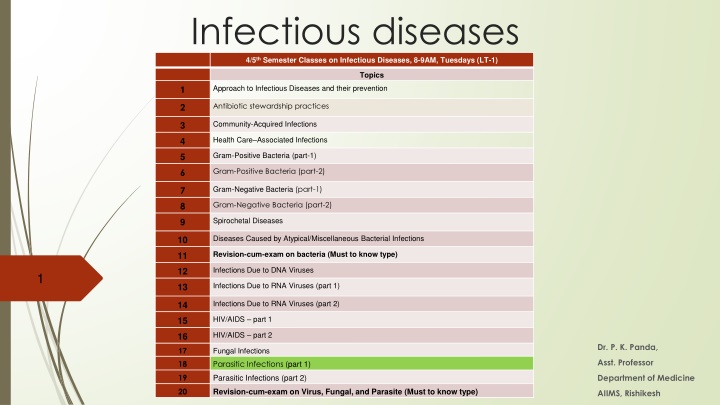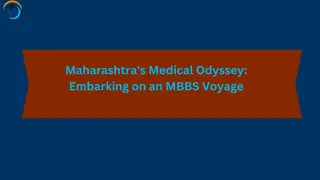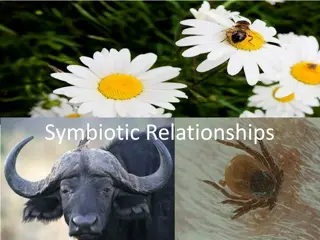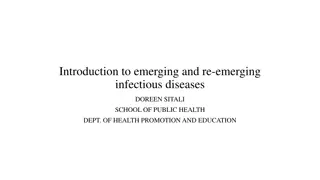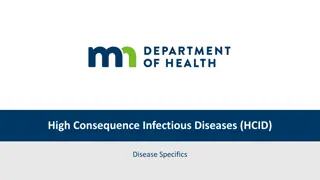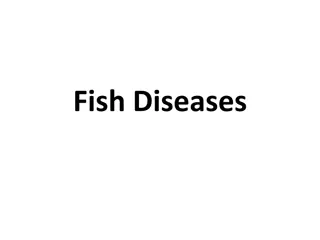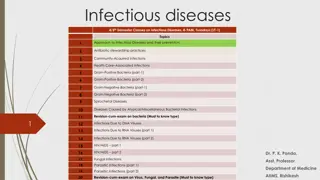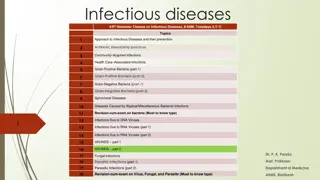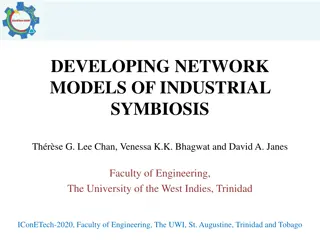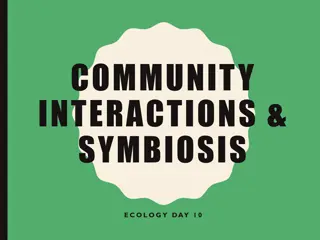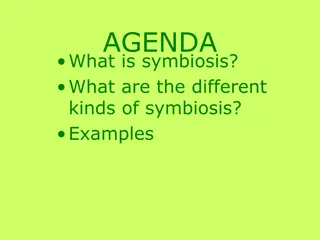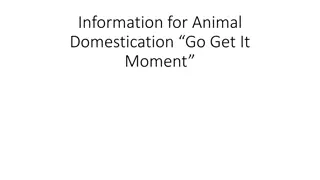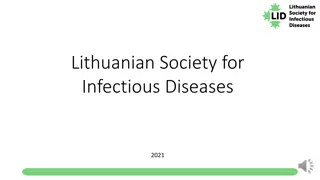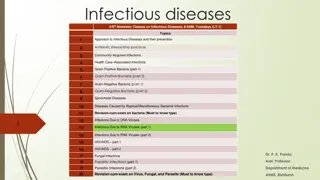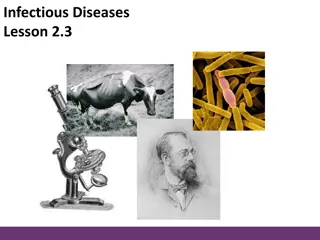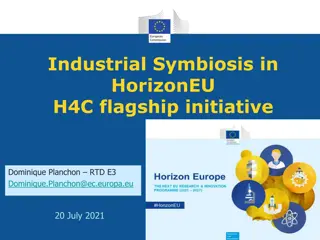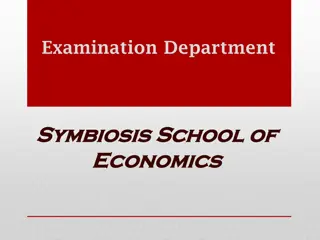Comprehensive Overview of Infectious Diseases and Symbiosis in Academic Setting
This academic course covers a wide array of topics related to infectious diseases, including antibiotic stewardship, bacterial infections, viral diseases like HIV/AIDS, fungal and parasitic infections, and parasite life cycles. Additionally, it delves into the intricacies of symbiosis, exploring commensalism, mutualism, and parasitism. The curriculum includes detailed discussions on various pathogens, their modes of transmission, prevention strategies, and diagnostic approaches.
Download Presentation

Please find below an Image/Link to download the presentation.
The content on the website is provided AS IS for your information and personal use only. It may not be sold, licensed, or shared on other websites without obtaining consent from the author.If you encounter any issues during the download, it is possible that the publisher has removed the file from their server.
You are allowed to download the files provided on this website for personal or commercial use, subject to the condition that they are used lawfully. All files are the property of their respective owners.
The content on the website is provided AS IS for your information and personal use only. It may not be sold, licensed, or shared on other websites without obtaining consent from the author.
E N D
Presentation Transcript
Infectious diseases 4/5thSemester Classes on Infectious Diseases, 8-9AM, Tuesdays (LT-1) Topics Approach to Infectious Diseases and their prevention 1 Antibiotic stewardship practices 2 Community-Acquired Infections 3 Health Care Associated Infections 4 Gram-Positive Bacteria (part-1) 5 Gram-Positive Bacteria (part-2) 6 Gram-Negative Bacteria (part-1) 7 Gram-Negative Bacteria (part-2) 8 Spirochetal Diseases 9 Diseases Caused by Atypical/Miscellaneous Bacterial Infections 10 Revision-cum-exam on bacteria (Must to know type) 11 Infections Due to DNA Viruses 12 1 Infections Due to RNA Viruses (part 1) 13 Infections Due to RNA Viruses (part 2) 14 HIV/AIDS part 1 15 HIV/AIDS part 2 16 Dr. P. K. Panda, Fungal Infections Parasitic Infections (part 1) 17 18 Asst. Professor Department of Medicine 19 Parasitic Infections (part 2) 20 Revision-cum-exam on Virus, Fungal, and Parasite (Must to know type) AIIMS, Rishikesh
Symbiosis Commensalism Mutualism Parasitism Overlap between the major categories of symbiosis
Human parasites are divided into: 1. Endoparasites, which cause infection inside the body 2. Ectoparasites, which cause infection superficially within the skin Bedbug, Louse, Scabies, Demodex, Flea, etc
Parasite Life CycleA generalized mode Invading Human residing stage Pathogenesis Infective Stage to discharge stage (soil, water, animal host, insect) Extra-Human development Epidemiology Diagnosis
Intestinal entry, disease local/distant site Intestinal protozoans Intestinal worms Giardia lamblia Cryptosporidium parvum Entamoeba histolytica Ascaris lumbricoides Trichuris trichiuria Taenia saginata Enterobius vermicularis
Intestinal entry, disease elsewhere Acquired toxoplasmosis Hydatid disease (echinococcus) Cysticercosis (taenia solium) Visceral larva migrans (toxocara canis) Trichinosis (trichinella spiralis) Skin entry, intestinal manifestations Hookworm Strongyloides Schistosoma mansoni
Skin entry, localized disease Leishmaniasis Skin entry, disease by dissemination Malaria Filariasis Trypanosomiasis Schistosomiasis
Symptoms Parasite Abdominal pain and distension Giardia Cryptosporidium Amoebiasis Ascaris, hookworm, taenia Giardia Cryptosporidium Strongyloides Amoebiasis Trichuris Hookworm Trichuris Diarrhoea +/- malabsorption Diarrhoea with blood loss Tenesmus, prolapsed rectum
Symptom Mechanism Parasite Anaemia Blood loss Malabsorption Malnutrition Amoebiasis Hookworm Trichuris S mansoni Giardia Diphyllobothrium Heavy infestation
Symptom Mechanism Parasites Skin rash Papulovesicular Creeping eruption Peri-anal rash and pruritus Pulmonary migration Hookworm Strongyloides Enterobius Respiratory symptoms Ascaris Hookworm Strongyloides Toxocara
Symptom Mechanism Parasite Intestinal obstruction Appendicitis Jaundice, biliary colic Prolapsed rectum Intestinal perforation and peritonitis Worm bolus Obstruction Biliary obstruction Tenesmus, weight loss Transmural necrosis Ascaris Ascaris Ascaris Trichuris Amoebiasis
Diagnostic approach The cornerstone for the diagnosis is a thorough history of the patient s illness Physicians must counsel their patients to ensure that specimens are collected properly and arrive at the laboratory promptly Laboratory personnel and surgical pathologists should be notified in advance when a parasitic infection is suspected The laboratory procedures for detection of parasites in other body fluids are similar to those used in the examination of feces
Stool collection kit Stool collection kit with instructions for patients to transfer portions of the sample directly into bacterial carrier medium and fixative Refrigeration will preserve trophozoites for a few hours and cysts and ova for several days Contamination with water (which could contain free-living protozoa) or with urine (which can damage trophozoites) should be avoided Microscopic examination of feces is not complete until not complete until direct wet mounts (physiologic saline and dilute iodine solution), concentration techniques (formalin-ether sedimentation and zinc sulfate flotation), and permanent stains have been applied
